#Martin Schindler
Explore tagged Tumblr posts
Text
Schindi risking his life onstage today lmao
#(his dart bounced off and almost stabbed his thigh)#i really hope he wins its been a while#darts#ec23#martin schindler
2 notes
·
View notes
Text
Die PDC Darts-WM 2024 - London
Darts WM 2024 “Die Weltmeisterschaft der Professional Darts Corporation findet vom 15. Dezember 2023 bis 3. Januar 2024 im Alexandra Palace, London, statt. Die PDC Darts-WM wird zum 31. Mal ausgetragen” Mehr Infos: Darts WM Startzeiten und mehr Deutsche Teilnehmer Es nehmen insgesamt 5 deutsche Spieler teil, darunter auch Der 39-jährige Saarländer Gabriel Clemens, der bei der letzten WM das sogar…

View On WordPress
#Alexandra Palace#Barrel#Dartboard#Darts#Darts-Sport#Darts-WM#Flight#Gabriel Clemens#Martin Schindler#Shaft#Steel-Darts
0 notes
Text
Martin Schindler: A Rising Star in the World of Darts
Martin Schindler, der aufstrebende Star des deutschen Darts, macht sich schnell einen Namen auf der internationalen Bühne. Verpassen Sie keinen Moment seiner Reise - besuchen Sie Darts News für die neuesten Nachrichten und Updates.
0 notes
Text
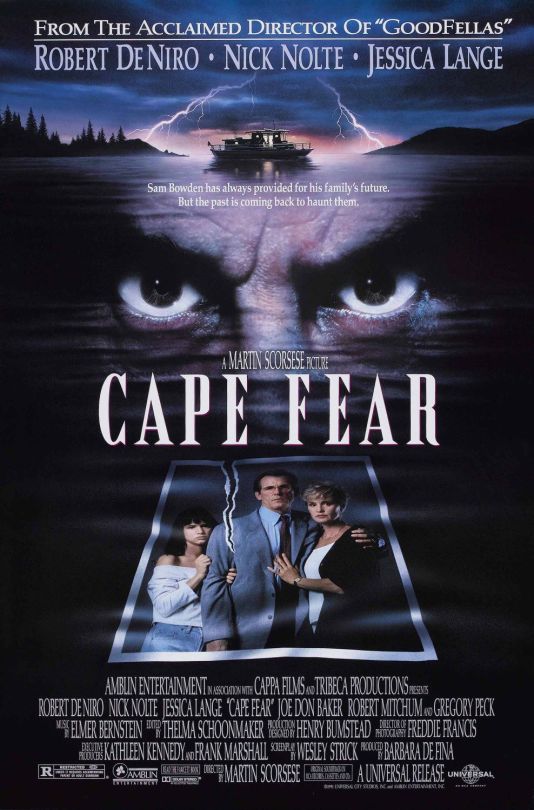
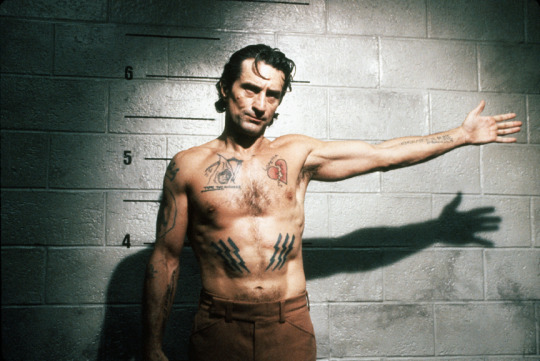
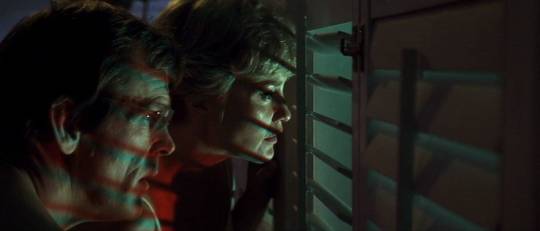


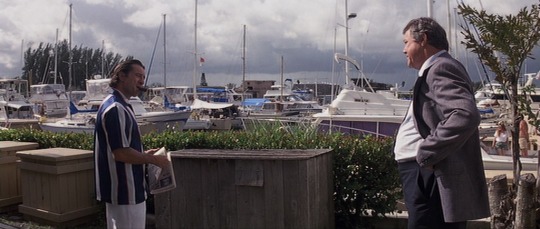
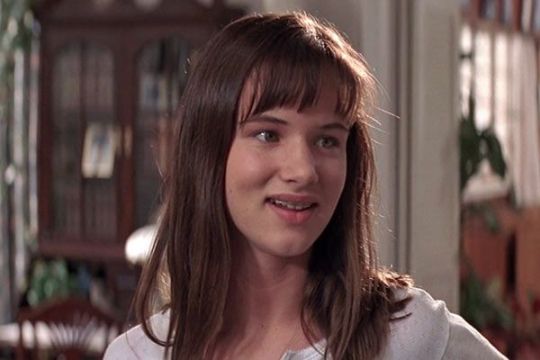

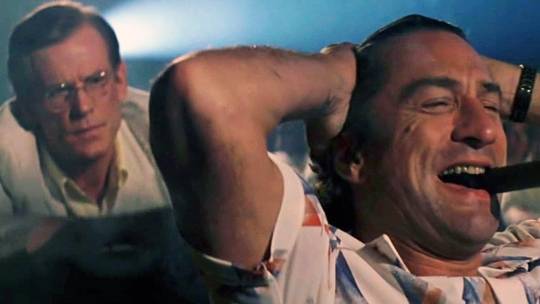

Cape Fear (1991)
"Let's get something straight here. I spent fourteen years in an eight by nine cell, surrounded by people who were less than human. My mission in that time was to become more than human. You see? Granddaddy used to handle snakes in church, Granny drank strychnine. I guess you could say I had a leg up, genetically speaking."
#cape fear#1991#american cinema#martin scorsese#wesley strick#john d. macdonald#robert de niro#nick nolte#jessica lange#juliette lewis#joe don baker#robert mitchum#gregory peck#martin balsam#illeana douglas#fred thompson#zully montero#james r. webb#elmer bernstein#freddie francis#Scorsese fully channelling de Palma for this queasy Southern gothic remake of a beloved bit of Americana kino. this was actually meant to#be a Spielberg project (yeesh can you imagine?) but Marty traded him Schindler's List which worked out better for everyone. initial#reaction to seeing Marty's right hand arm de Niro as the antagonist was‚ admittedly‚ to snigger but give the man his dues he fully embodies#this grotesque‚ repellent boogeyman. crucially tho he has the seed of a genuine grievance against Nolte's (also fairly unlikeable) lawyer#lead and i think that's what really propels this script. the film is stacked with great performances‚ with a young J Lewis really#standing out in a layered and thoughtful performance. the cameos by prev Cape Fear stars are perhaps a tiny bit gratuitous (and it's kind#of sad that Peck's final role was little more than a brief meta injoke) but i get why and it doesn't detract too much from the film‚#particularly once it lurches full throttle into a biblical tinged flood and fire apocalypse for the (very well executed) final act#ott stuff and boundary pushing not just in its freakier moments but in its commitment to underscoring tension with moments of near pure#comedy‚ but i had a great time with this. oh and what a score! i mean i think it's just a re arrangement of the og score but still it slaps
27 notes
·
View notes
Text
'The trailer and release date for Ripley have been revealed, previewing the upcoming Netflix thriller. The project was first announced in 2019 and was originally planned for Showtime as a television adaptation of Patricia Highsmith's seminal Tom Ripley novels. Andrew Scott, known for his performances in Fleabag as the Hot Priest, in Sherlock as Moriarty, and his acclaimed performance in the 2023 drama All of Us Strangers, was cast in the lead role of Tom Ripley.
Netflix has unveiled the trailer for Ripley, which will premiere on April 4...
In the moody monochrome preview, Tom Ripley is the name on everyone's tongue. But there are also hints that the familiar character, now played by Scott, leads a dangerous life that may well lead to ruin. The trailer also reveals John Malkovich has been cast. Previously, Malkovich played Tom Ripley in the 2002 film Ripley's Game.
What To Know About Netflix's Ripley Show
The eight-episode drama begins with Tom Ripley as he's just getting by in his average con artist ways. Set in early 1960s New York, the titular character is hired by a wealthy man to convince his son, Dickie Greenleaf (Stardust and Emma actor Johnny Flynn) to return home from Italy. But the allure of Dickie's lifestyle and his seemingly perfect romance with the suspicious Marge Sherwood (The Equalizer 3 star Dakota Fanning) tempts Ripley. He goes to extreme lengths to maintain his place next to Dickie, which eventually devolves into deceit, fraud, and murder.
The new Netflix miniseries hails from Steven Zaillian, who wrote and directed every episode. He's contributed to some of Hollywood’s most influential movies, winning an Oscar for the screenplay of Schindler’s List as well as writing on Scorsese's Gangs of New York and The Irishman. Zallian also wrote and directed on HBO's acclaimed limited series The Night Of, with Ripley being his second foray into TV.
The drama, which also stars musician and No Time to Die actor Eliot Sumner, moved to Netflix from Showtime earlier this year after Netflix execs viewed footage of the show. With nods to the overall Ripley franchise, a notable writer, and a talented cast, the series could be a big hit with audiences and at awards ceremonies.'
#Ripley#Netflix#The Night Of#Martin Scorsese#Gangs of New York#Schindler's List#Eliot Sumner#Andrew Scott#Dakota Fanning#Fleabag#Hot Priest#Sherlock#Moriarty#All of Us Strangers#Ripley's Game#John Malkovich#Patricia Highsmith#Dickie Greenleaf#Johnny Flynn#Marge Sherwood#Steven Zaillian
6 notes
·
View notes
Text
Best Ralph Fiennes movies and performances:
1. Schindler's List - Steven Spielberg (1993)
2. Harry Potter and the Deathly Hallows - Part 2 - David Yates (2011)
3. The Grand Budapest Hotel - Wes Anderson (2014)
4. Harry Potter 20th Anniversary: Return to Hogwarts - Casey Patterson and Joe Pearlman (2022)
5. In Bruges - Martin McDonagh (2008)
6. Skyfall - Sam Mendes (2012)
7. Harry Potter and the Deathly Hallows - Part 1 - David Yates (2010)
8. Kubo and the Two Strings - Travis Knight (2016)
9. The Reader - Stephen Daldry (2008)

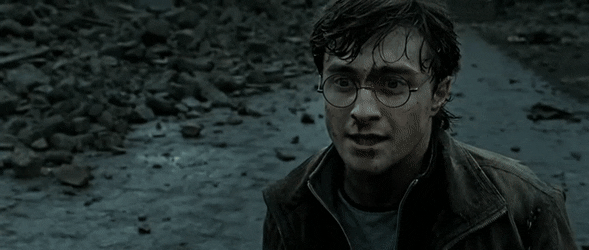

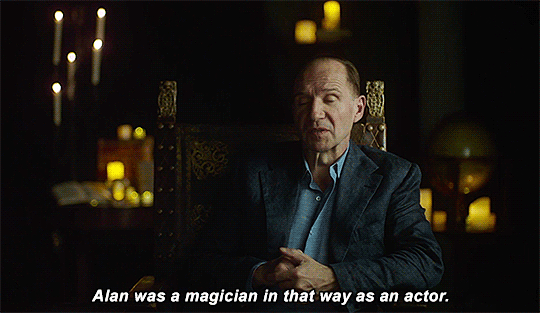


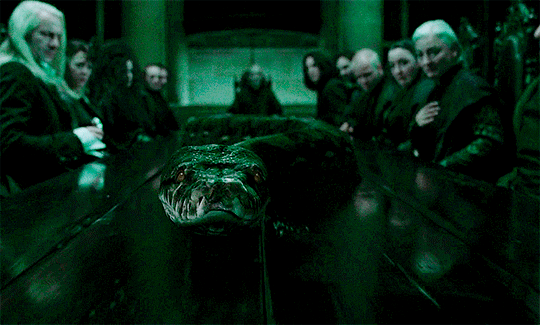
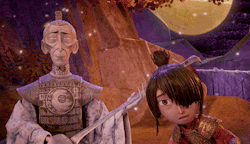
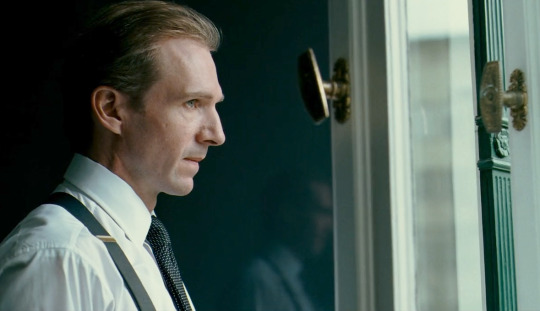
#ralph fiennes#schindler's list#Harry Potter and the Deathly Hallows Part 2#the grand budapest hotel#Harry Potter 20th Anniversary Return to Hogwarts#in bruges#skyfall#harry potter and the deathly hallows part 1#Kubo and the Two Strings#The Reader#steven spielberg#david yates#wes anderson#Casey Patterson#Joe Pearlman#martin mcdonagh#sam mendes#travis knight#stephen daldry#1993#2011#2014#2022#2008#2012#2010#2016#1990s#2010s
8 notes
·
View notes
Text
Killers of the Flower Moon: Scorsese's Latest Deconstruction of American Violence
Scorsese's latest is another lengthy deconstruction of systemic American vioelnce, this time centered around the killings of Osage tribal members who suddenly became very wealthy. It is exquisite, and should be seen on the biggest screen possible.
“When oil is discovered in 1920s Oklahoma under Osage Nation land, the Osage people are murdered one by one – until the FBI steps in to unravel the mystery” reads most synopses of Killers of the Flower Moon, Martin Scorsese’s latest deconstruction of the foundational violence creating modern American life. However, that is only the broadest history covered by the film and paints a deceptive…

View On WordPress
#Ari Aster#Christopher Nolan#Contemporary Releases#Drama#Film Reviews#Goodfellas#History#Killers of the Flower Moon#Lyle Mitchell Corbine Jr.#Martin Scorsese#Oppenheimer#Rodrigo Prieto#Schindler&039;s List#Steven Spielberg#The Last Temptation of Christ#Thelma Schoonmaker#Wild Indian#Wolf of Wall Street
2 notes
·
View notes
Text
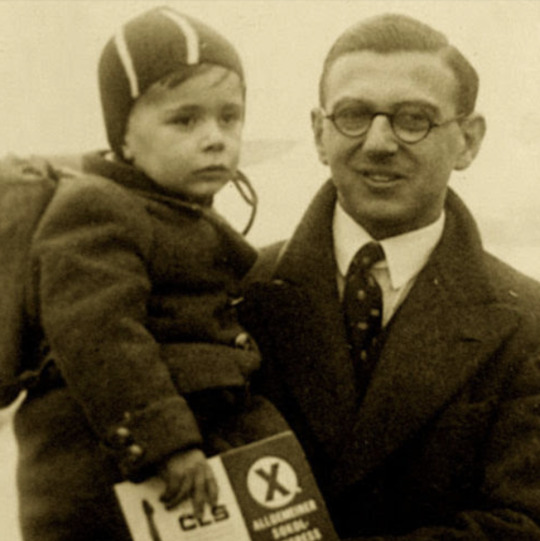
THURSDAY HERO: Nicholas Winton
The British Schindler: Nicholas Winton
He saved 669 children.
Nicholas Winton was a young British stockbroker who rescued 669 Czech Jewish children from being sent to Nazi death camps. He never told anybody of his heroism, and the story only came out 50 years later after his wife found an old briefcase in the attic containing lists of children he’d saved.
Nicholas was a 29 year old clerk at the London stock exchange getting ready for a ski trip to Switzerland when he received an urgent call from his friend Martin Blake. Known to be passionately opposed to Nazism, Martin urged Nicholas to cancel his vacation and come to Prague immediately. He told Nicolas, “I have a most interesting assignment and I need your help. Don’t bother bringing your skis.”
It is a testament to Nicolas’ sterling character and strong moral compass that he didn’t waver for a moment. It was an easy decision to sacrifice his fun and relaxing ski trip and instead travel to a dangerous place on a mysterious mission.
Two months earlier, in October 1938, Nazi Germany had annexed the Sudetenland It was clear that the Nazis would soon occupy all of Czechoslovakia. When he reached Prague, Nicholas was shocked by the huge influx of refugees fleeing from the Nazis. In early November, the Kristallnacht pogrom occurred in Germany and Austria. Jews were killed in the street and hundreds of synagogues burned down, as well as Jewish-owned businesses. This horrifying event shocked the Jewish community in eastern Europe, and thousands were now desperate to flee.
Born to Jewish parents, Nicholas was actually Jewish himself. However, his parents changed their name from Wertheim and converted to Christianity before he was born. Nicholas was baptized and raised as a Christian, and he didn’t consider himself Jewish (although was doubtless aware that Hitler would.)
In Prague, organizations were springing up to help sick and elderly refugees, but Nicholas noticed that nobody was trying to help the children. In his words, “I found out that the children of refugees and other groups of people who were enemies of Hitler weren’t being looked after. I decided to try to get permits to Britain for them. I found out that the conditions which were laid down for bringing in a child were chiefly that you had a family that was willing and able to look after the child, and fifty pounds, which was quite a large sum of money in those days, that was to be deposited at the Home Office. The situation was heartbreaking. Many of the refugees hadn’t the price of a meal. Some of the mothers tried desperately to get money to buy food for themselves and their children. The parents desperately wanted at least to get their children to safety when they couldn’t manage to get visas for the whole family. I began to realize what suffering there is when armies start to march.”
Nicholas knew something had to be done, and he decided to be the one to do it. He later remembered, “Everybody in Prague said, ‘Look, there is no organization in Prague to deal with refugee children, nobody will let the children go on their own, but if you want to have a go, have a go.’ And I think there is nothing that can’t be done if it is fundamentally reasonable.”
Nicholas decided to find homes for the children in the UK, where they would be safe. He set up a command center in his hotel room in Wenceslas Square and his first step was to contact the refugee offices of different national governments and see how many children they could accept. Only two countries agreed to take any Jewish children: Sweden and Great Britain, which pledged to accept all children under age 18 as long as they had homes and fifty pounds to pay for their trip home.
With this green light from Great Britain, Nicholas did everything possible to find homes for the children. He returned to London and did much of the planning from there, which enabled him to continue working at the Stock Exchange and soliciting funds from other bankers to pay for his work with the refugees. Winton needed a large amount of money to pay for transportation costs, foster homes, and many other necessities such as food and medicine.
Nicholas placed ads in newspapers large and small all over Great Britain, as well as in hundreds of church and synagogue newsletters. Knowing he had to play on people’s emotions to convince them to open their home to young strangers who didn’t even speak English, Nicholas printed flyers with pictures of children seeking refuge. He was tireless in his efforts and persuaded an incredible number of heroic Brits to welcome the traumatized young refugees into their homes and hearts.
The office in Wenceslas Square was manned by fellow Brit Trevor Chadwick. Every day terrified parents came in and begged him to find temporary homes for their children. Despite Nicholas’ success in finding places for the kids to stay, British and German government bureaucrats made things difficult, demanding multiple forms and documents. Nicholas said, “Officials at the Home Office worked very slowly with the entry visas. We went to them urgently asking for permits, only to be told languidly, ‘Why rush, old boy? Nothing will happen in Europe.’ This was a few months before the war broke out. So we forged the Home Office entry permits.”
The first transport of children boarded airplanes in Prague which took them to Britain. Nicholas organized an amazing seven more transports, all of them by train, and then boat across the English Channel. The children met their foster families at the train station and Winton took great care in making the matches between children and foster parents.
The children’s transport organized by Nicholas Winton was similar to the later, larger Kindertransport operation, but specifically for Czech Jewish children. Nicholas saved an astounding 669 children on eight transports. Tragically, the largest transport of all was scheduled for September 1, 1939 – but on that day, Hitler invaded Poland and all borders were closed by Germany. Winton was haunted for decades by the remembrance of the 250 children he last saw boarding the train. “Within hours of the announcement, the train disappeared. None of the 250 children aboard was seen again. We had 250 families waiting at Liverpool Street that day in vain. If the train had been a day earlier, it would have come through. Not a single one of those children was heard of again, which is an awful feeling.”
Nicholas joined the British military and spent the rest of the war serving as a pilot in the Royal Air Force, attaining the rank of Flight Lieutenant. After the war, Nicholas worked for the International Refugee Organization in Paris, where he met and married Grete Gjelstrup, a Danish secretary. They moved to Maidenhead, in Great Britain, and had three children. Their youngest child, Robin, had Down Syndrome, and at that time children with the condition were usually sent to institutions. However Nicholas and Grete wouldn’t consider it and instead kept their son at home with the family. Tragically, Robin died of meningitis the day before his sixth birthday. Nicholas was devastated by the loss, and became an active volunteer with Mencap, a charity to help people with Down Syndrome and other developmental delays. He remained involved in Mencap for over fifty years.
Humble – and perhaps traumatized by the children on the train he wasn’t able to save – Nicholas rarely talked about his wartime heroism and his own family didn’t know the details. It was only in 1988 that Nicholas Winton became widely known. His wife found an old notebook of his containing lists of the children he saved. Working with a Holocaust researcher, she tracked down some of the children and located eighty of them still living in Britain. These grown children, some with grandchildren, found out for the first time who had saved them.
The BBC television show called That’s Life! invited Nicholas to the filming an episode that became one of the most emotional clips in TV history. With Nicholas in the audience, the host told his story, including photos and details about some of the children he’d saved. Then she the told Nicholas that one of those children was the woman in the seat next to him! They embraced, teary eyed, and the host announced there were more grown children in the audience as well. She asked everybody who owed their life to Nicholas Winton to stand up. The entire audience stood up, as Nicholas sat stunned, wiping away the tears.
After that, Nicholas was showered with honors, including a knighthood for services to humanity. Known as the British Schindler, he met the Queen multiple times and received the Pride of Britain Award for Lifetime Achievement, both for saving refugee children and working with Mencap to improve the lives of people with cognitive differences. There are multiple statues of him in Prague and the UK, and his story was the subject of three films.
Nicholas Winton died in Britain in July 2015, at age 106. Today there are tens of thousands of people who owe their lives to Nicholas Winton.
For saving hundreds of Jewish children, we honor Nicholas Winton as this week’s Thursday Hero.
131 notes
·
View notes
Text

🎬 Steven Spielberg: El director fue muy meticuloso y tardó cerca de 10 años en desarrollar esta magistral e impactante película.
Además, sentía tanto respeto por el material, que no quería dirigirla, por eso la ofreció a varios colegas. A Martin Scorsese, que no se sentía cómodo con la historia por no ser judío; a Roman Polanski, que no estaba preparado para abordar el Holocausto después de haberlo sobrevivido en la infancia; y a Billy Wilder, que quería hacer de ésta su última película.
Al final Spielberg decidió dirigirla él mismo y el resto es historia.
🎬 La lista de Schindler es probablemente una de las más grandes obras maestras del séptimo arte.
*Ralph Fiennes, Ben Kingsley, Liam Neeson, con Spielberg*
8 notes
·
View notes
Text
Martin Freeman Says Backlash Over Age Gap in Ortega Movie Wasn't Fair
Eve Crosbie Apr 27, 2024, 8:36 AM ET
Lionsgate
Martin Freeman addressed the controversy around his latest film, "Miller's Girl."
Freeman, 52, plays a teacher who has a relationship with his student, played by 21-year-old Ortega.
He said the movie isn't endorsing age gap romances any more than Holocaust movies endorse genocide.
Martin Freeman addressed the controversy caused by his latest film, "Miller's Girl," in which he stars opposite Jenna Ortega, who is 31 years younger than him.
The movie, which landed on Netflix on April 25, follows a high school student, played by Ortega, who begins a sexual relationship with her English teacher, played by Freeman.
Audiences were quick to criticize the film due to the age gap between the two actors — Ortega is 21, while Freeman is 52. Some said the film romanticizes the relationship between minors and those in positions of power.
Speaking with The Times of London for an interview published Saturday, Freeman defended "Miller's Girl" as "grown-up and nuanced."
"It's not saying, 'Isn't this great,'" he said of the film's dynamic between his character and Ortega's.
Freeman said the film had been "tainted by association" with a difficult subject.
He said that derision wasn't distributed equally, though — saying that people seemed to understand the level of distance involved in stories depicting Nazism.
"Are we gonna have a go at Liam Neeson for being in a film about the Holocaust?" he asked, referring to Neeson's starring role in Steven Spielberg's 1993 film "Schindler's List."
Martin Freeman and Jenna Ortega in "Miller's Girl."
Martin Freeman and Jenna Ortega in "Miller's Girl." Lionsgate
Although the controversial relationship at the center of "Miller's Girls" prompted a lot of comment, the film wasn't a hit.
It premiered at the Palm Springs Film Festival to underwhelming box office numbers.
The R-rated film was given a small theatrical release in the US, showing at just 350 screens for just one week domestically, earning $321,000 in ticket sales, according to box office tracker The Numbers.
It took an additional $568,522 at the international box office, bringing its total gross to $889,522 — less than a quarter of its $4 million production budget.
On review aggregator site Rotten Tomatoes, the film earned a critic score of 29% based on 58 reviews. Its audience score is 42% based on 50-plus verified ratings.
This could, of course, change now that "Miller's Girl" has been on one of the most popular streaming platforms."
(Disclosure: Mathias Döpfner, CEO of Business Insider's parent company, Axel Springer, is a Netflix board member.)
Dear GOD. Did he just... Martin, I know you're not this stupid, so seeing you being put up to behave like this, is just...gross. Your co-star had just come off of an Antisemitic publicity stunt with Tom Cruise, she's a one note actress, and we all know how films that are supposed to be cautionary tales, usually get turned into the opposite. Wall Street kicked off the age of Greed. The Fight Club inspired real underground fight clubs. If a film is not clear about its moral stance, then it WILL be misinterpreted. I don't know what's going on with you, but I'm going to pray for you, Martin. You need it. Especially working for Lionsgate.
#Martin Freeman#Jenna Ortega#Miller's Girl#Disclosure: Mathias Döpfner#CEO of Business Insider's parent company#Axel Springer#is a Netflix board member.
7 notes
·
View notes
Note
absolute treat of an ask game.🎬And action: 1, 7, 8,10, 16, 21?
1. what's the most depressing movie you've ever watched?
oh, i watched quite a lot of tragic movies. probably the grave of fireflies or the pianist... but the only film that actually managed to made me sob multiple times was les misérables (2012).
7. a film you wish had a sequel?
le fate ignoranti. i just wonder about the characters and their relationships, and in which direction they could go.
8. which book would you like to see adapted into a film?
the locked tomb (but as an animated series!) and johannes cabal for sure.
10. what's your favorite movie director?
stanley kubrick. also ingmar bergman, martin scorsese, and park chan-wook. i also have a soft spot for tarantino, alas.
16. a film you love but everyone else hates?
not exactly everyone, but the last jedi has a lot of detractors. i really liked it tho, but i admit it's not without flaws. still the best one in that whole mess of a trilogy by far.
21. a film with an amazing soundtrack?
anything by john williams (star wars, the first hp movies, schindler's list especially) + the prince of egypt and lord of the rings (obviously). a lot of hans zimmer's works tho - you can never go wrong with him. personally i really love alexandre desplat and abel korzeniowski's works too.
thanks a lot for the ask ❤️
3 notes
·
View notes
Text
Martin Schindler is literally the cutest guy ever he's just a little teddy bear his smile is so cute like

I want to hug him🫂
4 notes
·
View notes
Text
100 must-read books!
This is a list of books considered "must-reads" from various lists and online posters. I'll be reviewing them as I go but mainly keeping track of what I have and haven't read here.
American Gods by Neil Gaiman
Lord of the Flies by William Golding
Fahrenheit 451 by Ray Bradbury
Sophie's World by Jostein Gaarder
Wide Sargasso Sea by Jean Rhys
The Great Gatsby by F. Scott Fitzgerald
To Kill a Mockingbird by Harper Lee
Matilda by Roald Dahl
The Secret History by Donna Tart
Do Androids Dream of Electric Sheep by Philip K. Dick
The Godfather by Mario Puzo
Murder on the Orient Express by Agatha Christie
The Man Who Mistook His Wife for a Hat by Oliver Sacks
Noughts and Crosses by Malorie Blackman
In Cold Blood by Truman Capote
Frankenstein by Mary Shelly
Alice's Adventures in Wonderland by Lewis Carroll
Heart of Darkness by Joseph Conrad
Wuthering Heights by Emily Bronte
Nineteen Eighty-Four by George Orwell
The Grapes of Wrath by John Steinbeck
Norwegian Wood bt Haruki Murakami
One Flew Over the Cuckoo's Nest by Ken Kesey
The Man in the Iron Mask by Alexandre Dumas
The Color Purple by Alice Walker
The Girl with the Dragon Tattoo by Stieg Larsson
Lolita Vladimir Nabokov
Great Expectations by Charles Dickens
The Harry Potter Series by J.K Rowling
His Dark Materials trilogy by Philip Pullman
The Old Man and the Sea by Ernest Hemingway
The Picture of Dorian Gray by Oscar Wilde
The Road by Cormac McCarthy
Ulysses by James Joyce
Bad Science by Ben Goldacre
I Capture the Castle by Dodie Smith
Fear and Loathing in Las Vegas by Hunter S. Thompson
Les Miserables by Victor Hugo
The Catcher in the Rye by J.D Salinger
The Wind in the Willows by Kenneth Grahame
Wild Swans by Jung Chang
The Hitchhikers Guide to the Galaxy by Douglas Adams
Tinker, Tailor, Soldier, Spy by John le Carre
Crime and Punishment by Fyodor Dostoevsky
The Poisonwood Bible by Barbara Kingsolver
Adventures of Huckleberry Finn by Mark Twain
Gulliver's Travels by Johnathan Swift
The War of the Worlds by H.G Wells
Anna Karenina by Leo Tolstoy
Freakonomics by Steven D. Levitt
Persuasion by Jane Austen
The Help by Kathryn Stockett
Beloved by Toni Morrison
A Clockwork Orange by Anthony Burgess
American Psycho by Bret Easton Ellis
Notes from a Small Island by Bill Bryson
Macbeth by Shakespeare
The Lord of the Rings (trilogy) by J.R.R Tolkien
The Outsiders by S.E Hinton
Mrs. Dalloway by Virginia Woolf
The Handmaid's Tale by Margaret Atwood
A Wild Sheep Chase by Haruki Murakami
Schindler's Ark by Thomas Keneally
London Fields by Martin Amis
Sherlock Holmes and the The Hound of the Baskerville's by Arthur Conan Doyle
My Man Jeeves by P.G Wodehouse
The English Patient by Michael Ondaatje
The Mill on the Floss by George Eliot
The Count of Monte Cristo by Alexander Dumas
Little Women by Louisa May Alcott
Gladys Aylward the Little Woman by Gladys Aylward
Mindnight's Children by Salman Rushdie
Tess of the D'Ubervilles by Thomas Hardy
The Boy in the Stripped Pajamas by John Boyne
Hamlet by William Shakespeare
Goodnight Mister Tom by Michelle Magorian
Dissolution by C.J Sansom
The Time Machine by H.G Wells
Winnie the Pooh (complete collection) by A.A Milne
Animal Farm by George Orwell
The Diary of a Young Girl by Anne Frank
The Castle by Franz Kafka
Dracula by Bram Stoker
All Quiet on the Western Front by Eric Maria Remarque
Bridget Jones's Diary by Helen Fielding
The Kite Runner by Khaled Hosseini
Pride and Prejudice by Jane Austen
To The Lighthouse by Virginia Woolf
Memoirs of a Geisha by Arthur Golden
Misery by Stephen King
The Chronicles of Narnia by C.S Lewis
The Shining by Stephen King
The Odyssey by Homer
War and Peace by Leo Tolstoy
The Secret Garden by Frances Hodgson
Tell No One by Harlan Coben
Moby Dick by Herman Melville
A Tale of Two Cities by Charles Dickens
Middlemarch by George Eliot
Jane Eyre by Charlotte Bronte
10 notes
·
View notes
Text
“Pope Francis himself should know better and most certainly does. In his graduate studies he was a student of the theology of Romano Guardini, which he clearly likes (as do I). Surely Guardini, who wrote extensively with an eye toward modern culture, is not guilty of merely repeating past formulas or of ignoring modern culture. And the Pope knows this. Neither were Bouyer, Balthasar, David L. Schindler, de Lubac, or even Garrigou LaGrange and Thomists such as Pieper, Gilson, Ulrich, and Maritain, for that matter.
Nor are a host of contemporary theologians, both young and old, guilty of such stale categories of thought. Creative and brilliant theologians and philosophers like Cyril O’Regan, David C. Schindler, John Betz, Matthew Levering, Emmanuel Falque, Jennifer Martin, Margaret Turek, Remi Brague, Keith Lemna, Jonathan Ciraulo, Jacob Wood, Bishop Erik Varden, and many others too numerous to list here, are in no way guilty of the theological deficits this document claims that theology up to this point has suffered from. I mention these thinkers simply because they are some of my favorites. But there are literally hundreds of equally gifted Catholic intellectuals out there doing precisely what the Pope is asking here—but in a manner I suspect the Pope does not favor because they do not serve his agenda.”
— Larry Chapp: “New papal document reads like a conclusion in search of an argument”
2 notes
·
View notes
Text
The Best Picture Oscar My Way (1980-1999)
Here’s Part 2 of Best Picture My Way (as started here). All information about my approach with this category can be found on that linked first part.
For convenience sake, I’ll relay this message. Only the films I add onto here as nominees will have listed nominated producers next to the movie’s title. (Here’s the Wikipedia page for the rest.)
1980
The Empire Strikes Back - Gary Kurtz
Raging Bull
The Elephant Man
Coal Miner’s Daughter
Ordinary People
1981
Raiders of the Lost Ark
Das Boot - Gunter Rohrbach; Michael Bittins
Reds
On the Golden Pond
Chariots of Fire
1982
Tootsie
E.T.: The Extra-Terrestrial
Fitzcarraldo - Werner Herzog; Willi Segler; Lucki Stipetic
Missing
Gandhi
1983
Fanny and Alexander - Jorn Donner
Terms of Endearment
Scarface - Martin Bregman
Mender Mercies
The Right Stuff
1984
Amadeus (still)
The Terminator - Gale Anne Hurd
Love Streams - Yoram Globus; Menahem Golan
Ghostbusters - Ivan Reitman
A Passage to India
1985
Back to the Future - Neil Canton; Bob Gale
The Color Purple
After Hours - Robert F. Colesberry; Griffin Dunne; Amy Robinson
Ran - Masato Hara; Serge Silberman
Witness
1986
Platoon (still)
Misery - Rob Reiner; Andrew Scheinman
Hannah and Her Sisters
A Room with a View
Blue Velvet - Fred C. Caruso
1987
The Last Emperor (still)
The Princess Bride - Rob Reiner; Andrew Scheinman
Broadcast News
Moonstruck
Fatal Attraction
1988
Who Framed Roger Rabbit - Frank Marshall; Robert Watts
Rain Man
Dangerous Liaisons
Mississippi Burning
The Last Temptation of Christ - Barbara De Fina
1989
Do The Right Thing - Spike Lee
Driving Miss Daisy
Dead Poets Society
My Left Foot
Cinema Paradiso - Giovanna Romagnoli
1990
Goodfellas
Dances with Wolves
Edward Scissorhands - Tim Burton; Denise Di Novi
Ghost
The Godfather Part III
1991
The Silence of the Lambs (still)
Thelma & Louise - Ridley Scott
Beauty and the Beast
Boyz in the Hood - Steve Nicolaides
JFK
1992
Unforgiven (still)
A Few Good Men
Malcolm X - Spike Lee; Marvin Worth
Reservoir Dogs - Lawrence Bender; Harvey Keitel
Aladdin - Ron Clements; John Musker
1993
Schindler’s List (still)
The Piano
Philadelphia - Jonathan Demme; Edward Saxon
In The Name of the Father
The Fugitive
1994
The Lion King - Don Hahn
Forrest Gump
Pulp Fiction
The Shawshank Redemption
Eat Drink Man Woman - Kong Hsu; Li-Kong Hsu
1995
Toy Story - Bonnie Arnold; Ralph Guggenheim
Se7en - Phyllis Carlyle; Arnold Kopelson
The Postman (Il Postino)
Before Sunrise - Anne Walker-McBay
Braveheart
1996
Fargo
Trainspotting - Andrew Macdonald
Secrets & Lies
Jerry Maguire
The English Patient
1997
Titanic (still)
Good Will Hunting
L.A. Confidential
Princess Mononoke - Toshio Suzuki
Boogie Nights - Paul Thomas Anderson; Lloyd Levin; John S. Lyons; JoAnne Sellar
Lost Highway - Deepak Nayar; Tom Sternberg; Mary Sweeney
As Good as It Gets
The Full Monty
1998
Saving Private Ryan
Life is Beautiful
The Thin Red Line
The Big Lebowski - Joel and Ethan Coen
Mulan - Pam Coats
Central Station - Arthur Cohn; Martine de Clermont-Tonnerre; Robert Redford; Walter Salles
The Truman Show - Edward S. Feldman; Andrew Niccol; Scott Rudin; Adam Schroeder
Rushmore - Barry Mendel; Paul Schiff
Shakespeare in Love
1999
The Matrix - Joel Silver
American Beauty
The Green Mile
The Sixth Sense
Magnolia - Paul Thomas Anderson; JoAnne Sellar
The Straight Story - Neal Edelstein; Mary Sweeney
Man on the Moon - Danny DeVito; Michael Shamberg; Stacey Sher
Being John Malkovich - Steve Golin; Vincent Landay; Sandy Stern; Michael Stipe
#cinema#academy award#oscars#award show#alternative#animation#film#movies#I'm officially insane#international cinema#hollywood#the matrix#coen brothers#steven spielberg#disney#martin scorsese#robert zemeckis
7 notes
·
View notes
Text
'Patricia Highsmith’s 1955 novel The Talented Mr. Ripley has been made into two sterling films: 1960’s Plein soleil (Purple Noon) starring Alain Delon, and 1999’s The Talented Mr. Ripley headlined by Matt Damon, Jude Law, and Gwyneth Paltrow. Nonetheless, Netflix’s new Ripley stands head and shoulders above its predecessors (and most modern TV offerings) as an adaptation par excellence.
Over the course of its eight exhilarating episodes, all of them shot in breathtaking black-and-white by Oscar-winning cinematographer Robert Elswit (There Will Be Blood), this stellar thriller exhibits a formal precision, dexterity, and majesty that electrifies its tale of a small-time New York City grifter named Tom Ripley (a phenomenal Andrew Scott) who attempts to remake himself in Italy by slipping into the life of wealthy playboy Dickie Greenleaf (Johnny Flynn). Cunning cons and brutal murder ensue, all of them dramatized by the show with a suspenseful elegance and psychological complexity that does justice to its source material—and, in certain cases, adds new, incisive wrinkles to the oft-told tale.
Ripley is, quite simply, a small-screen masterpiece, and credit for its triumph goes, first and foremost, to writer/director Steven Zaillian. In the three decades since he won the Best Adapted Screenplay Oscar for Schindler’s List, the 71-year-old has collaborated with a who’s who of Hollywood greats, from Brian De Palma (Mission: Impossible) and Sydney Pollack (The Interpreter) to Ridley Scott (Hannibal, American Gangster, Exodus: Gods and Kings), David Fincher (The Girl with the Dragon Tattoo) and Martin Scorsese (Gangs of New York, The Irishman).
Along the way, he’s additionally penned the excellent Moneyball, helmed three of his own feature scripts (including the fantastic Searching for Bobby Fischer), and spearheaded HBO’s acclaimed The Night Of. Even with such a formidable résumé, however, Zaillian’s latest may be his finest achievement to date. Its scintillating style wholly wedded to its storytelling, and its meticulousness central to its simmering undercurrent of sociopathic madness, it’s a work of controlled Machiavellian malevolence, rife with tension and rich in detail and depth.
Guided by Zaillian’s virtuosic hand, Ripley is the rare example of genuine auteurist television, even as it simultaneously stands as a testament to the fact that projects are more likely to be great when they’re made by a collection of great artists. Now available on the streaming platform, it’s an early contender for end-of-year accolades. Consequently, we were elated to speak with Zaillian about the challenges of making his sensational series, collaborating with Scott and Elswit, and the enduring appeal of Highsmith’s famous novel.
Ripley is better directed than 99 percent of modern television, to a great degree because it’s been actually directed, with personality, flair, and guiding motifs and techniques. Was there any pushback to your approach, given that TV generally wants formal style to take a backseat to storytelling?
No, there was no pushback. The style that the show became… I started with the writing, I can’t write anything without imagining it. That being said, things obviously change when you’re shooting, and motifs come up and the style gets set at a certain point. But the whole time we were shooting, basically all anybody is seeing are dailies. It’s hard to tell from dailies what’s going on, you know [laughs]? Most people at the studios didn’t see anything until it was edited. So I had this great freedom to do what I wanted in terms of its look, and I spent a lot of time doing it. It was important to me that it looked good and felt good in terms of its tone, and most of the people who came to this come from film, and we approached it as one long movie.
Is the writing process different when you’re writing for yourself, versus another director?
I don’t write any differently. As I mentioned, I can’t write it without seeing it, so whether I’m writing for myself or someone else, it’s the same process. I don’t ever put in, close-up here or wide shot there. However, I do see it, so when I’m making my shot lists, I’ve already done it once before when I was writing it. But in terms of writing in a different way if someone else is going to direct it, no.
What made you want to tackle The Talented Mr. Ripley, which has been adapted multiple times before?
I’ve been wanting to do it since I read it, which I think was probably back in the ’80s. Certainly after Purple Noon but before The Talented Mr. Ripley movies. I saw it in a certain way and I wanted to try that, so when this opportunity came up, I took it. I just think it’s one of the great characters and one of the great stories that can be told over and over again.
What is it about the novel that’s allowed it to endure so powerfully over the past 70 years? Despite its age, it feels extremely relevant in today’s socio-political climate.
The idea of a character who becomes somebody else is something that happens all the time, today and throughout history. We’re strangely fascinated with it. I mean, it comes up all the time! There are articles—one that comes to mind from a few months ago was called “The Talented Mr. Santos.” I think this particular character is fascinating, certainly to me and I hope to other people. And the style of it—and I don’t mean the photographic style, but the style of the story—comes from Highsmith, where she finds these kinds of extraordinary things happening in normal circumstances with normal people. It’s something she’s well known for, and is something which I feel we can all relate to.
You’ve directed three feature films, but none since 2006. As a director, what compelled you to segue to television?
It’s the way things go. It’s strange to say that it’s easier to get a television show done than a movie, but it seems to be true, at least with the kinds of movies that I want to make. [TV] is a lot harder and it takes a lot longer, and I long for the days and the chance to make a movie again. I’m hoping that that’s what I’m going to do next, only because it won’t consume years and years of my time [laughs]. I can do the same thing and not have it take four or five years.
At what point did you decide to shoot the entire series in black and white, and what was your thinking behind that creative decision?
It started with the writing; that’s how I imagined it. Why, I don’t know. Maybe because of the period. I did want it to not feel like a postcard, and Italy, if shot in bright vibrant colors in the summertime with blue skies, can feel that way. I felt that this was a more dark and sinister story, not unlike a film noir story, and so black and white seemed to be the natural choice.
Yet despite that monochromatic scheme, you didn’t lose the classical beauty and romance of Italy.
You can’t lose that in Rome—it’s impossible [laughs]. Nor did I want to. But that being said, even a familiar place to people—like, well, you don’t really see the Coliseum except when he’s driving around with a corpse in the car—I didn’t want those places to be front and center. I wanted the backstreets of Rome more than the boulevards. Naples and Palermo are both really interesting places that photograph wonderfully in black and white.
But again, part of the story does take place on the Amalfi Coast, and that’s the place that’s hard to make sinister in color. When you have the aqua blue water and the bright sun, it’s tough. Luckily, we were at least filming there in the fall, so we didn’t have the brunt of tourism or those postcard shots, which certainly helped.
Robert Elswit shot the pilot of The Night Of and the entirety of Ripley. What is it about him as a cinematographer that makes your collaboration work so well?
It’s many things. Obviously, he’s really talented. He shoots beautiful movies. And we get along really well. He’s very intrepid—he’ll do anything, and go anywhere, and work crazy hours. He’s a workhouse in that regard. This took that kind of person. We shot for 160 days in Italy, with a one week break in the middle, and that’s tough on anybody. He just loved the idea of shooting it in black and white, and he’s a master with lighting, as you can tell when you watch it. It’s a great collaboration, we have.
The series is dominated by shots of Tom at a distance, framed in long claustrophobic hallways and by constricting architecture (such as the stairs of Dickie’s home in Atrani). Was it difficult to find the locations you needed for that visual style?
That’s one of those things when you talk about motifs… yes, I wrote a scene where Tom climbs a lot of steps, but that was a place that [production designer] David Gropman and I found. We drove from Salerno to Sorrento, all the way up the coast, and this little town called Atrani that has 800 people had those stairs, and I was fascinated by them. I said to David, it looks like an M.C. Escher drawing, and I found out much later that [Escher] had actually lived there and had drawn those very stairs. So that’s where it started. Then, wherever we went, we encountered stairs, and that’s when it started becoming a motif.
You shoot Tom’s two murders (and their aftermaths) in long, methodical sequences. Why was it important to stage those in such detail?
I had a little note scribbled on a Post-it when I started this saying, “It’s easier to kill somebody than it is to get rid of the body.” I wanted to show that. Even getting rid of a body that’s laying down in a little boat is hard to get rid of. I thought, this could be an opportunity to try something that I’d like to, which is showing these things in what feels like real time, and how difficult it is. I thought it was interesting, I thought it was entertaining, and I thought it was something I’d wanted to do from the beginning. So in the scripts, in episodes three and five, those sequences are about 35 pages long.
How did you settle on Andrew Scott for Tom?
I’d only seen him in three things, and one of them, I didn’t even see him; I’d only heard him—that was in a movie called Locke in which he did not appear, but he was a voice on the telephone. He created a really interesting character with just his voice. That was the first time I saw anything he was in. Then his Moriarty [in Sherlock] and Fleabag. With those three things, I felt he could do anything. They were so different from each other that I felt, that’s Tom. He’s got the range to play Tom.
Often in Ripley, the most important aspect of a given scene is what’s taking place beneath what’s being said aloud. From a writer’s standpoint, how do you tackle such undercurrents?
That’s always been important to me in the writing—to know, what is the point of the scene? Is it a piece of dialogue, is it an action, or is it the moments between the dialogue? Often, that’s where it is for me. Like you say, someone is lying and the other person knows they’re lying, and they play this kind of game with each other—that is the point of the scene! So those moments in-between the dialogue are what’s important. I spend a lot of time with that, and the actors got that, and they’re smart and they’re good and they like doing that. So in those instances, that was what was going on.
John Malkovich makes a late, brief appearance as Reeves, which is both a sly shout-out to Ripley’s Game (which he starred in, as Tom) and a tantalizing suggestion of future seasons. Was Malkovich’s participation always part of the plan—and was his cameo designed to keep the door open for a follow-up?
Both of those things are true. I wrote to him and explained that I’d like him to consider doing this. It’s very short, it’s just a couple of days, but maybe it’s a fun idea. And he thought it was and came to Venice and did it.
Yes, I was also thinking that if there’s another season, this character appears in the next two Highsmith books about Ripley, and he’s a great character. He does not appear in The Talented Mr. Ripley book; he doesn’t appear until the second book. But yeah, if that ever happens, I hope he’ll do it. Because he’s perfect for it.'
#Steven Zaillian#Robert Elswit#Patricia Highsmith#Matt Damon#Jude Law#Gwyneth Paltrow#Ripley#The Talented Mr Ripley#Andrew Scott#Locke#Sherlock#Fleabag#John Malkovich#Reeves Minot#Ripley's Game#David Gropman#Atrani#Moriarty#Netflix
7 notes
·
View notes